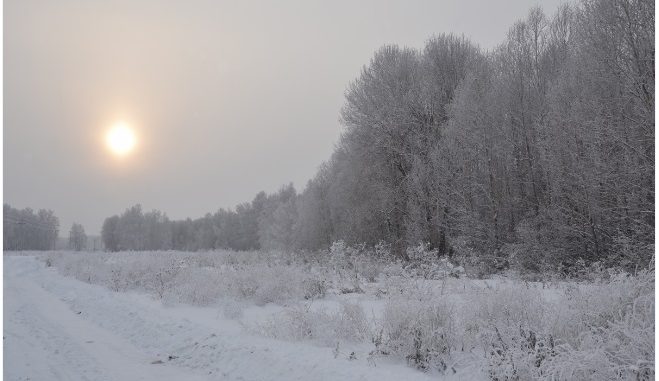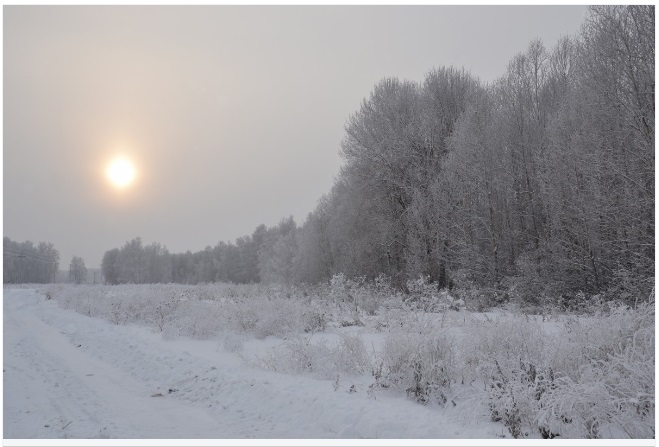

Don’t let Leftist social media shut us out! Sign up for Daily Surge’s daily email blast… it’ll keep you updated on each day’s Daily Surge new columns. Go to dailysurge.com and sign up under “Free Newsletter” on the right side of the page, one-third of the way down. It’s easy! And like it says, it’s free!
Surge Summary: When one considers all the answered and unanswered questions regarding the CO2, plant coverage, climate, etc, it seems like many environmental decisions are made based on politics rather than actual concern for planet earth and its atmosphere.
by Rob Morse
I wonder what is happening. Our planet has been covered with ice for most of the last 10 million years. From what I can tell, we are at the end of a warm spell between glaciers. We should have started to cool off and dry out about two-thousand years ago as we enter the next ice age due to the expected changes in earth’s orbit and inclination. Maybe human activity and added carbon dioxide in the atmosphere kept the planet from cooling off. I have questions about climate, and this is what I learned.
A complex world of ice, water, and plants
I wondered where carbon comes from and where it goes. Most of the earth’s carbon is not in our atmosphere. It isn’t even close. There are about 6-hundredths of a pound of CO2 per square inch from atmospheric CO2. Most of the earth’s carbon isn’t in the biosphere either, not in plants and the top few feet of the earth. Most of the earth’s huge store of carbon is in the earth’s crust, the top few miles of solid ground.
To give you a sense of proportion, all the carbon in the atmosphere weighs as much as 27 mm of soil, about 1-1/4 inch. There are hundreds of times more carbon buried below the surface of the earth than are carried in the atmosphere above as carbon dioxide.
The carbon in the earth isn’t in the form of fossil fuels like coal, oil, or methane. The carbon is held as carbonate rocks. Think of chalk, limestone, and dolomite. There are a lot of carbonate rocks around and there are not a lot of fossil fuels. If you want to compare them, then remember that they routinely price oil by the kilogram and they price limestone by the ton. Chalk is cheap because there is so much of it.
We know what happens when we burn fuel. We add CO2 to the atmosphere. We know that plants consume carbon dioxide when they grow. Nature also removes CO2 from our atmosphere when mountains wear away. Calcium-Silicates are exposed and weathered to form carbonates through both organic and inorganic processes. For example, calcium silicate becomes calcium carbonate (limestone) and silicon oxide (sand). That happens day after day and yet the process isn’t steady at all.
Some scientists wonder if the reason the last few ice ages lasted so long was because of the Himalayan Mountains. In earth’s history, we think it is relatively rare to be able to walk up to the bottom of the stratosphere where you are above most of the weather. Two continents collided when the Indian subcontinent ran into Asia. That huge mountain chain stuck up so steeply and so high that the mountains weathered away quickly due to ice and snow. That pulled CO2 out of our environment. The carbon was pulled out of our atmosphere, dissolved in our oceans, and consumed by marine organisms that put the carbon on the bottom of the sea floor as carbonates. I didn’t know that geology influences atmospheric chemistry.
Am I saying that we should reduce the CO2 in our atmosphere by grinding up mountains and letting them wash into the sea? I don’t know. I’m not sure anyone else knows either. I didn’t know it was a question until I looked.
There is more I wonder about. The world has changed in the last 50 years.
Let me say that again more precisely. We know the world has changed many times in many ways over long periods of time. In the last 50 years, we have been able to watch the world change in ways that humans have never been able to observe before. We can scan the entire surface of the earth in a few days as we look down from satellites. We’ve seen the planet turn green before our eyes.
We’ve seen the deserts change. They turned green with new vegetation as sand turned to grasslands. We’ve seen arid grasslands overtaken by woody brush. We saw brush and scrub replaced by forests as forests grew faster and thicker. We’ve seen the tree line on mountains move up to higher elevations. That raises a bunch of questions.
There are a couple of reasons the world turned green. Yes, we were planting more trees and growing more crops. We also weren’t cutting down trees and burning wood for fuel as much, at least until this winter when politicians turned off natural gas and electricity. Also, increased levels of carbon dioxide in the atmosphere let plants grow earlier in the spring, faster each summer, and grow longer into the fall. Increased levels of CO2 also let plants grow in places they couldn’t grow before. Plants became more tolerant of too much heat, too much cold, and too little water.
I have not read of environmental models that include increased plant growth due to increased levels of CO2. Maybe those climate models are accurate. I don’t know and those details are critically important.
We’re talking about a lot of green. Think of the number of leaves that come between the ground and the sky. Some reports said we increased the leaf cover index by 15 percent in the last two decades. I heard about a report that said the leaf cover index rose by 40 percent in the last seven decades, but I’m trying to find that report and verify that number. At least it gives me something to wonder about.
This is a big deal because we are talking about an effective increased green area more than half the size of the United States.
That seems important. Then I remembered that what happens on land almost doesn’t matter. Plants use the process of photosynthesis to convert carbon dioxide to carbohydrates and oxygen. About 80 percent of photosynthesis happens in the ocean rather than on land. Planting a tree might not be that important after all.
For one thing, most of our planet is covered by the ocean: 71 percent to be precise. For another thing, photosynthesis in the ocean happens fast. The number of phytoplankton that take up CO2 can double from day to day. They usually grow in a Malthusian cycle of bloom-and-bust as they consume the dissolved nutrients in the water. I don’t think these green aquatic plants were ever limited by the amount of CO2 that was dissolved in the ocean. Or were they?
With increased amounts of CO2 dissolved in the ocean, the blooms of phytoplankton can take place in colder water and during days with less sunlight. The phytoplankton need slightly less nutrients like iron, calcium, and phosphorus when it is easier to capture CO2. We’ve seen some areas near the earth’s poles with huge increases in phytoplankton. One report showed an increased growth rate of 57-percent. Now that is a lot of new green.
Like the green plants on earth, increased CO2 means we see plants grow in the water where they weren’t growing before. That moves about 10-billion tons of carbon out of the environment and into the deep oceans every year. I’m not sure if that is an old number or a new number that takes into account the increase of green phytoplankton in the oceans.
We know a little about how to count tree leaves, but measuring phytoplankton and algae in the ocean is harder. There is a lot to know and I want to understand more about climate and mass transport.
Back down on earth, I’m pretty sure that we would be building new nuclear power plants if we were serious about reducing our output of CO2 into the atmosphere. We’d be funding research to make nuclear power plants more efficient and cheaper. We’re not doing that.
We’re buying solar cells from China instead. We are also subsidizing solar installations in cloudy places where photovoltaics will never generate the power it took to build them.
Those solar cells are built in China using electricity from coal-burning power plants. China starts building a new coal-powered electrical generating station every week. That makes me think most of our climate decisions are political manipulations to grab power rather than to change the climate.
There is a lot to think about.
~_~_~_
It took me 1300 words to explain the little I know and the less I understand. I hope you enjoyed wondering around with me. RM
Sources-
- https://earthobservatory.nasa.gov/images/144540/china-and-india-lead-the-way-in-greening
- https://www.foxnews.com/science/earth-is-greener-today-than-it-was-20-years-ago-thanks-to-human-activity-counterintuitive-nasa-study-shows
- https://www.nrdc.org/stories/massive-surge-plankton-has-researchers-pondering-future-arctic
- https://climatesciencenews.com/2021-06-02-china-built-38-4gw-new-coal-capacity-2020.html
The views here are those of the author and not necessarily Daily Surge.
Originally posted here.
Also posted at Clashdaily.com
Image: CC0 Public Domain; Adapted from: https://pxhere.com/en/photo/1460661
The post How Green is My Planet?- Many Climate Change Concerns Driven by Politics More Than Facts appeared first on DailySurge.